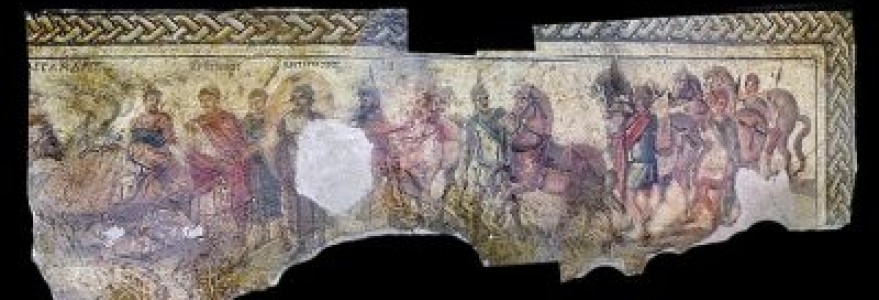Archaeologists from the University of Warsaw, in collaboration with the General Directorate of Antiquities and Museums of Syria, determined the foundation date of the city of Apamea, one of the most important ancient urban centers.
Until these days, the date of foundation and founders of the military camp, which became a city Apamea, proposed by the scholars, were mere speculations. According to Prof. Marek T. Olszewski and Dr. Houmam Saad, the city of Apamea was founded most probably in autumn 320 BC, following the Triparadeisos treaty of late summer, near Baalbek.
The religious founding act of the Macedonian colony was done by Antipater the Regent of the Macedonian Empire (320-319 BC), and his son Kassander, later known as the founder of Thessaloniki in Macedonia.
The material source that made these findings possible were photographs of pavement mosaics discovered in 2011. This exceptional mosaic presenting a historical nature was discovered in illegal excavations of an organized group of professional antiquities thieves and smugglers who photographed the mosaic. The analysis is therefore based only on the photographic evidence, fortunately conserved.
The archaeologists, Prof. Marek T. Olszewski, and Dr. Houmam Saad succeeded to reconstruct nearly twenty years of the historical events related to the foundation of Apamea (320-300 BC) as well. The mosaic might also be an important source to further knowledge about the “successors” (Diadochi) of Alexander the Great (deceased in 323 BC).
The historians discovered that the mosaic is of exceptional quality and major importance, contributing to the understanding of unknown historical events and thus re-formulating the history of Hellenistic Middle East.
Prof. Olszewski and Dr. Houmam analyzed and published the iconographical program of the mosaic, which is still currently wanted by INTERPOL. Several of these publications were uploaded on academia.edu.



